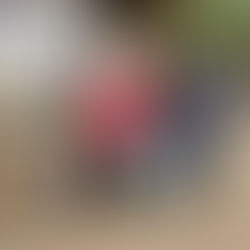Partners: western larch and mushrooms
- Kent Goodwin
- Oct 2, 2019
- 2 min read
A visitor to the Kimberley in the summer may not notice how abundant western larch trees are in many parts of the Nature Park. In the next few weeks, as the days shorten and the green larch needles turn to gold, their presence will be eye-catching.

The view from Romantic Ridge in late October.
But right now, as the first needles are starting to turn, something else is catching our eyes as we walk along the trails between the larch trees. Little shiny mushrooms with reddish-brown caps are popping up by the hundreds in many parts of the Park.

Larch boletes along Stump Trail.
Singly or in dense little clusters, these are the fruiting bodies of an underground fungus that plays an important role in keeping our larch trees healthy and flourishing. The larch bolete (Suillus grevillei) is a fungus that lives in the soil in larch forests where its underground threads (mycelia) form intimate attachments with the root hairs of the larch trees. The mycelia actually penetrate into the root tips and form special structures that allow for the exchange of materials between the two organisms. The fungus and the tree form a symbiotic partnership, with the tree providing carbohydrates to the fungus and the fungus returning the favour by greatly enhancing the tree’s ability to absorb water and minerals from the soil. This partnership, known as an ectomycorrhizal association, is not uncommon in conifer forests with many woody shrubs and trees relying on fungal partners to gather the raw materials they need to survive.

Diagram of an ecotomycorrhizal association by C. Cripps.
Most of the year the fungus lies unseen beneath the surface of the soil. In the fall, as the temperatures cool and the weather becomes wetter, the subterranean mycelia start to grow beautiful little mushrooms that pop up to produce and spread their spores and continue their life cycle.

Sometimes the fungus gets a little carried away with mushroom formation.
You can find larch boletes along many park trails and you will recognize them by the shiny mucous coating on their caps, their reddish-brown hue, often with yellow rims and their yellow/orange stalks. If you look at underside of the cap you will find a bright yellow sponge-like surface rather than the gills of some other mushrooms. If you bruise that surface it will quickly turn brown before your eyes.

The underside of the cap turns brown quite quickly when bruised.
In addition to providing nutrients to western larch trees, the larch bolete is also a food source for small mammals in the Park. If you look carefully as you walk along the trails you may encounter mushrooms with sections missing and tiny tooth marks where squirrels or other rodents have been nibbling away.

These boletes have been nibbled on by some small animal.
Occasionally you might see a mushroom up in a tree where a squirrel has left it to dry.

Two suillis mushrooms in the crotch of a shrub along Trickledown Trail.
We hope you get a chance to explore the Park this fall, either on your own or with one of our KNPS guided hikes. There is always something to discover.
























